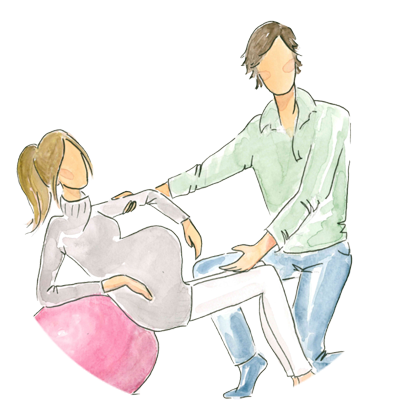Midwife Consultation
· During Pregnancy ·


During this private session we will discuss subjects of your interest and any particulars that might be worrying you. Our goal is to support you and help you enjoy your pregnancy.
You will receive individual guidance and support during this special time of your life and your questions will be answered in a private and friendly environment.
The most common subjects to discuss are: Choosing your maternity service provider, understanding the Spanish maternity system, Birth Plan elaboration, discomfort during pregnancy and solutions, etc. but we can discuss any subject you want.
What To Expect From Our Midwives?
One of the most beneficial factors for mothers and babies during pregnancy is the tranquility and overall well-being of the mother, encompassing physical, emotional, and mental aspects. In consultations with our midwives throughout pregnancy, you can address any concerns and ask questions about your pregnancy, childbirth, and your overall health.
The midwives at Bel & Mums have extensive experience assisting and supporting women of all kinds during pregnancy, childbirth, and the postpartum period. Therefore, we can provide guidance on virtually everything—from your health, nutrition, and physical exercise during pregnancy to offering advice on preparing for childbirth and the postpartum period. We can also offer suggestions on which professionals or centers can provide you with the best care based on your specific situation.
Moreover, if you are a foreigner and not familiar with the healthcare system in Spain, we can help you better understand it, outline its pros and cons, and provide insight into what to expect at each stage, along with the alternatives available to you.
Keep in mind that if you have a reimbursement policy, it’s highly likely that it will cover our consultations. You can check here for some of the insurance plans that we know cover them.
We Adapt To Your Needs!
SPANISH OR ENGLISH
We can use either of the two languages in our consultations.
REMOTELY
Conveniently from anywhere in the world.
PRIVATE
Absolutely private consultations. So you can ask anything and everything.
Book A Consultation With Our Midwives
Keep in mind that this service is covered by certain reimbursement policies, up to 90% of its cost. You can check here for some of the insurance plans that offer this coverage.
Midwife Consultation
Online
English or Spanish
40 minutes
Private Consultation with your Midwife
Remotely, wherever you are
Covered by reimbursement policies
80€
Related Services
Book A Consultation With Our Midwives
English or Spanish
40 minutes
Private Consultation with your Midwife
Remotely, wherever you are
Covered by reimbursement policies
80€
Insurance Companies That Cover Our Services
Our services are covered by health insurance only if you have a reimbursement policy. Here are some examples of insurances that cover our services up to 90%. We recommend checking with your insurance company regarding the coverage of your reimbursement policy for this particular service.






























If you have any questions about our Midwife Consultation service during pregnancy, feel free to contact us!







